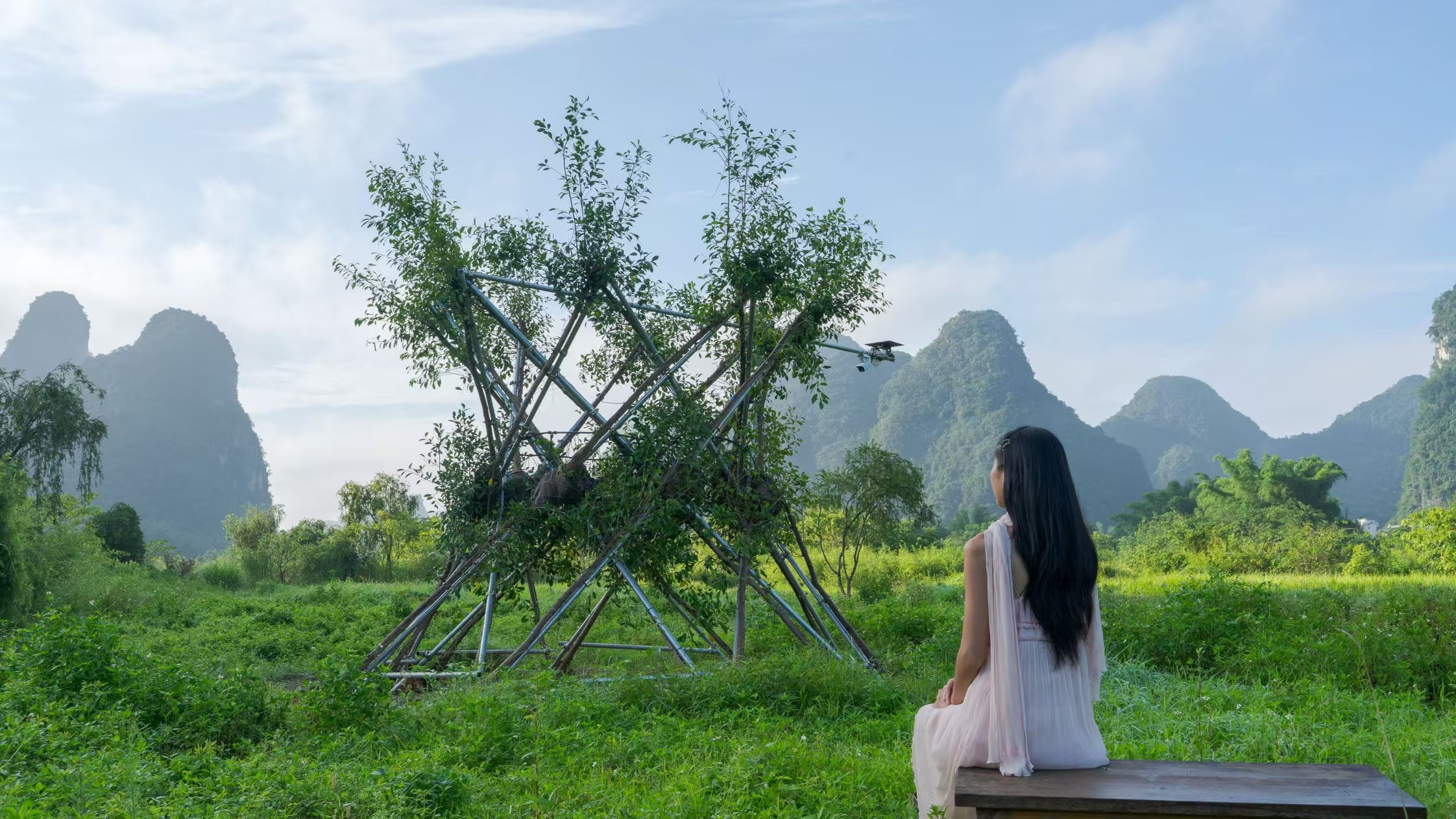As the metal rusts, the banyan trees fuse into a single living organism. An ecosystem is born where humans live in harmony with nature. Will this be the future of architecture?
Richard Sanders, Yangshuo
The Hyperboloid Banyan is a remarkable tree sculpture that immerses visitors in lush greenery. As you walk into the structure, you are surrounded by vibrant green foliage. Turning around and looking out through the entrance, you’ll see a Chinese hackberry tree where young couples often meet at sunset. In the distance, the Yulong River meanders peacefully, with the karst mountains of Yangshuo providing a stunning backdrop.
Construction of this extraordinary sculpture began with a metal scaffold shaped like a hyperboloid tower—an elegant mathematical form composed of straight lines. While hyperboloid towers have been built worldwide from various materials, this one is unique: it is alive! Thirty Chinese banyan trees have been cultivated on the scaffold, transforming it into a living monument.
This sculpture serves as a source of inspiration for future architecture. Envisioned as growing, self-repairing houses, these structures could adapt naturally to a changing environment. By extracting carbon from the air and supporting ecosystems, they embody regenerative design principles.
The artist behind this visionary project is Felix Klee from Germany. With a background in architecture and physics, Felix is exploring the creation of living sculptures grown from strangler figs. The project was made possible through the dedication of the Herbsforest team and the support of volunteers and advisors. Special thanks go to Ed, Yifan, Jon, and Owen for their invaluable contributions.
This living sculpture blurs the line between architecture and nature, hinting at a future where human habitats may evolve into organic, self-sustaining ecosystems.
双曲面榕树:启迪未来建筑的活体树雕塑
双曲面榕树是一座令人惊叹的树形雕塑,步入其中,绿意盎然。转身望向入口,你会看到一棵朴树,几对年轻情侣在夕阳下相遇。在远处,遇龙河蜿蜒流淌,阳朔的喀斯特山脉形成壮丽的背景。
这座雕塑的建造始于一座以金属脚手架打造的双曲面塔,结构简单,线条流畅,具有优雅的数学美感。虽然世界各地都曾用多种材料建造过双曲面塔,但这座却别具一格:它是“有生命”的!脚手架上种植了三十棵中国榕树,使其成为一座活的纪念碑。
该雕塑为未来建筑提供了丰富的灵感。设想中,生长中的房屋能够自我修复,灵活适应不断变化的环境。它们通过吸收空气中的二氧化碳,改善生态系统,展现出极具再生能力的设计理念。
这项充满远见的创作由来自德国的艺术家菲利克斯·克利完成。他拥有建筑学和物理学的学术背景,正在探索用绞杀榕培育的活体雕塑。项目的成功离不开阳朔香草森林团队的努力,以及所有志愿者和提供建议的朋友们。特别感谢Ed、一帆、赵健和欧文的大力支持!
这座活体雕塑模糊了建筑与自然的界限,预示着未来人居环境或许将演变为有机、可持续的生态系统。

